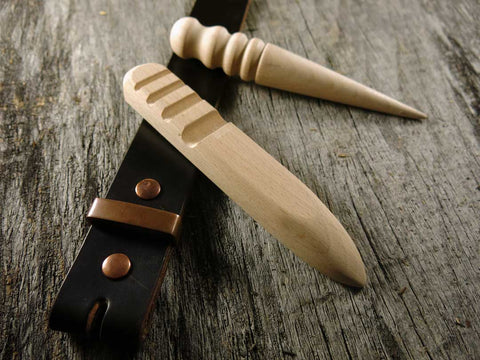The Ultimate Guide to Leather Edge Finishing: Achieving Perfection
Welcome to our comprehensive guide on leather edge finishing, where we unravel the mysteries behind achieving that coveted professional gloss and smoothness on the edges of your leather belts. Whether you're a hobbyist or a seasoned craftsman, understanding the nuances of edge finishing can elevate the quality of your work from good to exceptional. Today, we dive deep into the results of an exhaustive experiment designed to determine the best method for burnishing the edges of vegetable-tanned leather.
The Experiment
The test involved three primary materials: water, gum tragacanth (gum trag), and Tokonole (tokenol), applied across various processes to evaluate their effectiveness in edge finishing. The methods ranged from simple application and burnishing to more complex techniques involving sanding, dyeing, and wax application. Each method was assessed based on five critical aspects: ease, time, shine, feel, and color retention.
Key Findings
-
Water: Surprisingly effective, water provided a quick and impressive shine but lacked durability and consistency in finish quality over time.
-
Gum Tragacanth: A natural substance that slightly outperformed water in shine and ease of application, offering a subtle, natural finish.
-
Tokonole: Previously a go-to for many, including the experimenter, Tokonole delivered a smooth, glossy finish but raised concerns over potential staining and its synthetic composition.
The Best Method: A Hybrid Approach
The optimal technique for edge finishing emerged not as a single material application but as a combination of methods, emphasizing the importance of process over product. The winning approach involves:
-
Sanding: Starting with a rough sanding followed by finer grits (220 then 800) after each application of finishing material. This step is crucial for smoothing the fibers and preparing the edge for a polished finish.
-
Application of Finishing Material: Alternating between gum tragacanth and Tokonole in layers, each followed by burnishing, leverages the strengths of both materials - the natural penetration of gum trag and the smooth, glossy finish of Tokonole.
-
Final Waxing: Applying a layer of Columbus wax and burnishing it with a canvas cloth. This step enhances the durability and shine of the edge, providing a protective layer that also imparts a subtle sheen.
Practical Tips for Success
-
Precision in Application: Be mindful of where and how much product you apply. Excess Tokonole, for example, can leave undesired stains on the leather.
-
Embrace the Process: The key to achieving the best finish isn’t found in rushing but in the meticulous care and attention to each step of the process.
-
Experimentation is Key: While the outlined method provides a strong foundation, the perfect finish often comes from personal adjustments and preferences. Don't hesitate to experiment with different combinations and techniques.
Conclusion
Edge finishing is an art that demands patience, precision, and experimentation. Through the detailed analysis of various methods, we've discovered that a combination of traditional and modern techniques yields the best results. Embrace the process, and remember that the journey to perfection is as rewarding as the outcome itself.
Whether you're just starting out or looking to refine your skills, remember that the beauty of leatherwork lies in the details. Keep experimenting, keep learning, and let your craftsmanship shine through every edge you finish.


